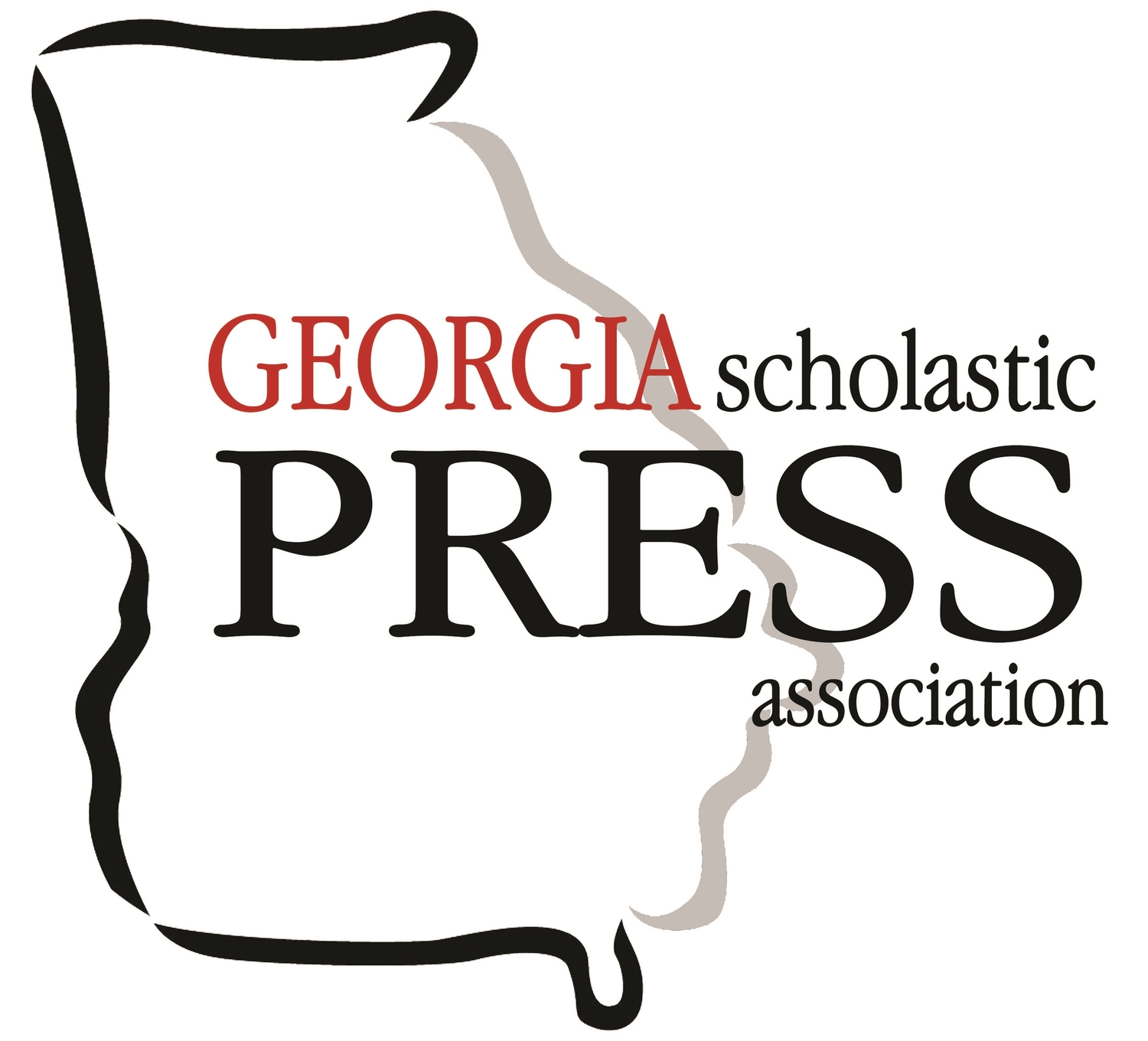"Back Together": GSPA's Winter Conference was an opportunity to network and form connections
/GSPA Student Ambassador Jordan Tovin of Woodward Academy authored the following piece from his perspective of attending the Winter Conference.
Members of GSPA’s Student Ambassadors pose for a photo at the Winter Conference.
On Feb. 10, I had the pleasure of attending the Georgia Scholastic Press Association’s annual conference held at the University of Georgia's Tate Student Center. After serving as a Student Ambassador for a year and a half, I was excited to get the opportunity to attend my first GSPA conference after last year’s conference was canceled due to the pandemic. Upon checking in, I received a conference guide alongside a bag to help me collect informative papers and posters being handed out by various companies and publications as well as a pen to help with note taking during each session.
With over 350 students and 17 schools in attendance, it was fitting that “Back Together,” created by Midtown High School’s Anna Rachwalski ‘22, was the theme of the conference. The schedule allowed for each attendee to visit five sessions that dealt with a variety of topics relating to student journalism. Preluding the individual sessions were the many tables that allowed students to interact with representatives of different publications and publication services.
My first session covered how one’s specific passion for student journalism could translate into a career. Presented by Grady College of Journalism and Mass Communication Professor Joe Watson, students learned to link skills to jobs in the public communications world.
Dr. Peters discussed how journalism and the First Amendment are linked.
“I really want to inform students about the career paths and opportunities that are available in the field of public affairs and communications,” Professor Watson said. “It’s a field that a lot of undergraduates don’t have awareness of, and I would like to give them an opportunity to learn about it.”
Attendees were generally engaged with presenters.
For my second session, I attended Grady College Director of Experiential Learning Samantha Meyer’s discussion on how one could turn their role on a student publication into a college major. To begin the session, Meyer asked the audience several questions about college majors. Although there were some students who said that they planned on majoring in journalism, others planned on pursuing a different career and leaving journalism as a high school elective. Meyer, who spoke from her experience, discussed with the audience how one’s experience on a student publication could prepare them to work for student publications at UGA. Meyer’s session reminded me of the connection between myself and all the other students in the room. When she asked the group what their favorite part of journalism was, many individuals, including me, answered that it was the interviews. Like other students in the room, I love speaking with others, listening to them and understanding their story.
As the photography editor for my school’s yearbook and someone who is consistently teaching photography to my own publication, I impulsively attended the session about incorporating more emotion into one’s photos that was taught by Ashley Blackwell and Nick Martinez of CADY. Both presenters covered a wide range of compositional techniques that could help one invoke a certain emotion through photography. I found the presentation both informative and useful as I am always trying to find ways to better teach the elements of photography.
After lunch, I attended experienced litigator Dr. Jonathan Peters’ presentation about how the First Amendment protects journalists in various situations. Knowing very little about the legal aspect of journalism, I was intrigued to learn more about different ways journalists are protected in various media formats.
Peters asked the audience for any questions they have about how journalism and the first amendment are linked.
Anna Rachwalski explains the importance of properly researching an issue before writing about it.
For the fifth and final presentation, I sat in on GSPA’s own Anna Rachwalski’s talk about how to write a great opinion piece. Based on her own experience with her award-winning publication, Midtown High School’s The Southerner, Rachwalksi charismatically walked the audience through the process of brainstorming ideas for opinion pieces, structuring opinion pieces and creating visuals and graphics for opinion pieces. Rachwalkski’s presentation included several activities that allowed audience members to interact with each other to help them better understand how to create an excellent opinion piece.
Rachwalski explained the importance of properly researching an issue before writing about it.
I saw every student in each session that I was engaging with the content that they were learning whether it was taking notes or verbally engaging with the presenter. The fact that so many journalists from so many publications and so many schools were present made me want to know what excited attendees the most. I talked to Kaija Gilbertoson-hall of the iliad literary arts magazine at Clarke Central High School.
“I am so excited to be here at GSPA. I am excited to learn more about convergence journalism and how to have a print publication while also having an online presence,” Kaija said. “I am also very excited to meet new people from around the state and learn about their publications and what they do.”
In addition to providing informative sessions, the conference also served as an opportunity to network and form connections. Because the conference attracted students from all across Georgia, I spoke with editors and writers from Atlanta to Athens—discussing how to manage staff and the type of pieces that we publish. The conference provided a chance to see how I can improve the publications on which I work.





